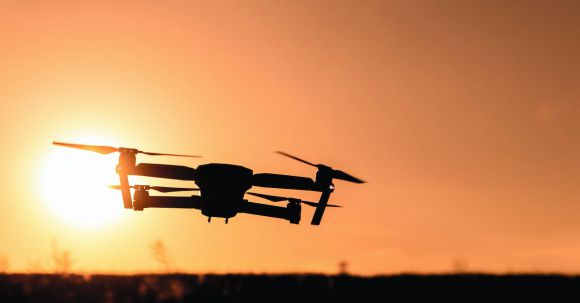Drones, also known as unmanned aerial vehicles (UAVs), have become increasingly popular in recent years. These flying machines have revolutionized various industries, including photography, videography, agriculture, and even package delivery. But have you ever wondered how they work and what they are made of? In this article, we will explore the inner workings of drones and uncover the materials that make them so efficient.
Understanding the Basics
Before delving into the components of a drone, it’s crucial to understand the basic principles of its operation. Drones are equipped with multiple rotors, typically four or six, that generate lift and enable controlled flight. By varying the speed and direction of these rotors, drones can move in any desired direction.
Power Source
To power the rotors and other electronic components, drones are equipped with batteries. These batteries are usually made of lithium-ion, as they provide a high energy density and are lightweight. The battery capacity determines the flight time of a drone, with higher-capacity batteries enabling longer flights.
Frame and Chassis
The frame and chassis of a drone play a vital role in its stability and durability. The most common materials used for drone frames are carbon fiber and lightweight metals like aluminum. These materials offer a good balance between strength and weight, allowing drones to withstand various weather conditions and minor crashes.
Flight Controller
The flight controller is the brain of a drone. It receives inputs from various sensors and user commands and translates them into actions for the motors. The flight controller also ensures stability and maintains the drone’s position in the air. It is typically equipped with an accelerometer, gyroscope, and barometer to measure acceleration, rotation, and altitude, respectively.
Propellers
The propellers, or rotors, are responsible for generating lift and propulsion. They are typically made of a lightweight and durable material, such as carbon fiber or plastic. The size and shape of the propellers affect the drone’s performance, with larger propellers providing more lift but requiring more power.
Motors
Drones are powered by electric motors that spin the propellers. These motors are brushless, meaning they do not have physical contacts (brushes) that can wear out over time. Brushless motors are more efficient, generate less heat, and require less maintenance compared to their brushed counterparts.
Sensors
To navigate and maintain stability, drones rely on various sensors. The most common sensors found in drones include GPS, which provides precise positioning information, and a compass, which helps the drone maintain its orientation. Additionally, drones may have obstacle detection sensors to avoid collisions and cameras for capturing photos and videos.
Camera and Gimbal
One of the main attractions of drones is their ability to capture stunning aerial footage. Most drones come equipped with a built-in camera or have the option to attach one. These cameras can record high-definition videos and capture high-resolution photos. To ensure stable footage, drones often employ a gimbal, which is a mechanical stabilizer that keeps the camera level and steady during flight.
Conclusion: The Future of Drones
Drones have come a long way since their inception, and their capabilities continue to expand. With advancements in technology, we can expect to see drones with longer flight times, improved cameras, and enhanced obstacle avoidance systems. As drones become more accessible and affordable, their applications will only continue to grow, making them an essential tool in various industries. So the next time you see a drone soaring through the sky, take a moment to appreciate the intricate engineering and materials that make it all possible.



